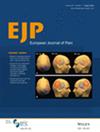Loss of Glutaminase 1 in Small Sensory Neurons Prevents Nerve Injury Induced Mechanical Allodynia: Insights From Conditional Knockout Mice
Abstract
Background
Glutamate, the primary neurotransmitter released by nociceptors, is predominantly synthesised by the enzyme Glutaminase 1 (GLS1). The involvement of GLS1 in pain pathways is well supported, as Gls1 heterozygous mice exhibit altered nociception and GLS1 levels increase in the dorsal root ganglia (DRG) under chronic peripheral inflammation. However, the specific contribution of GLS1 in sensory neurons to the development and maintenance of chronic neuropathic pain remains unclear. To explore this, we specifically targeted GLS1 expression in nociceptors.
Methods
We used the Cre-LoxP system to generate a transgenic mouse with a specific deletion of Gls1 gene in neurons expressing the Nav1.8 sodium channel. Gene deletion was assessed by genomic PCR and immunofluorescence. GLS1 conditional knockout (cKO) mice and control littermates, under naïve conditions or following spared nerve injury (SNI), were analysed for mechanical allodynia and for expression of GLS1 and other components of the glutamatergic system using real-time PCR and Western blotting.
Results
GLS1 cKO mice exhibited a significant reduction in GLS1 levels in the DRG, particularly in medium- to small-sized neurons. GLS1 deficiency prevented the development of mechanical allodynia following peripheral nerve injury. SNI induced GLS1 upregulation in the DRG of control mice, but not in cKO mice. In the spinal cord, NMDA receptor expression decreased after SNI only in naïve animals, while GLS1 and other glutamate receptors remained unchanged under all conditions.
Conclusions
Upregulation of GLS1 in sensory neurons after peripheral nerve injury contributes to mechanical allodynia. Targeting peripheral GLS1 could offer a potential analgesic strategy for neuropathic pain.
Significance Statement
We generated a transgenic mouse with a specific deletion of the Gls1 gene in Nav1.8-expressing neurons to assess the role of peripheral GLS1 in pain transmission. GLS1 is not required for physiological pain but is essential for the development of mechanical allodynia after nerve injury. GLS1 is upregulated in nociceptors following nerve injury, suggesting enhanced glutamate signalling. Taken together, results suggest that targeting GLS1 expression in neuropathic conditions could be a potential therapeutic strategy.

 求助内容:
求助内容: 应助结果提醒方式:
应助结果提醒方式:


